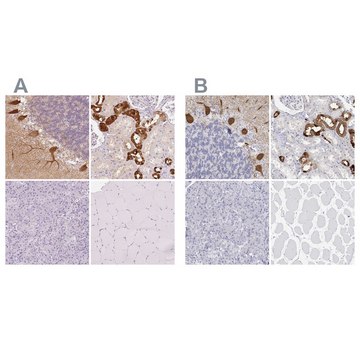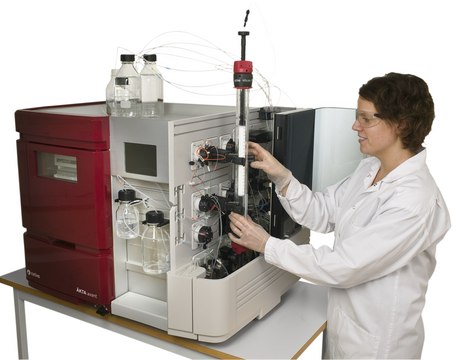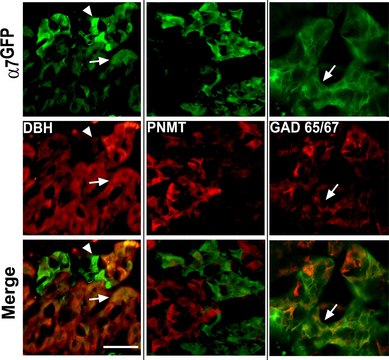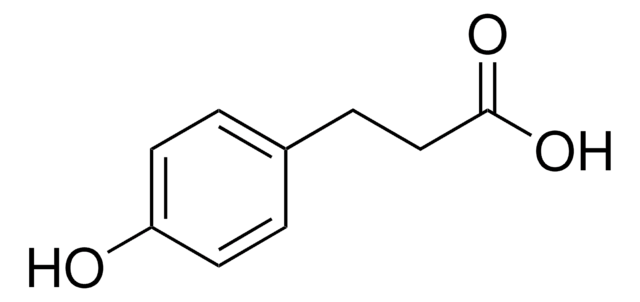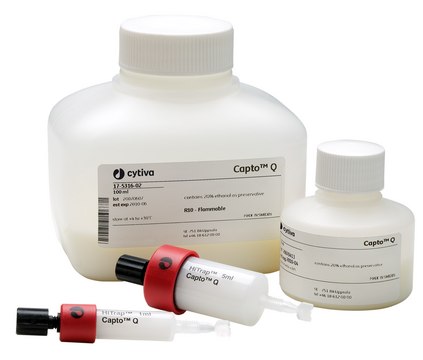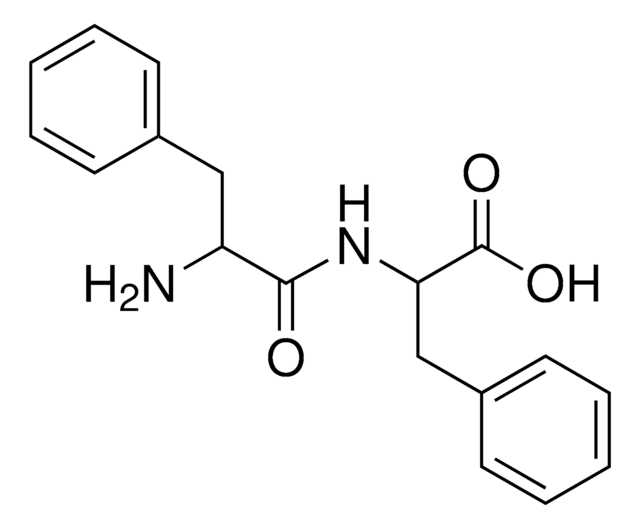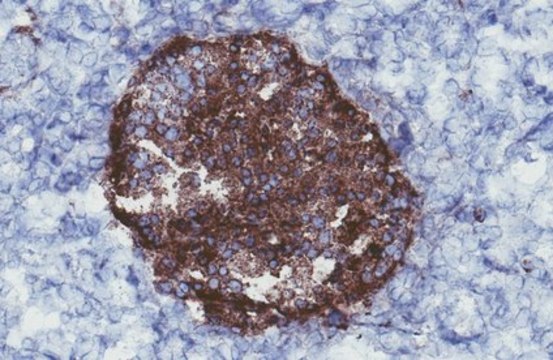MABS1998
Anti-HPa3 Antibody, clone HIC3-2D12
clone HIC3-2D12, from mouse
Sign Into View Organizational & Contract Pricing
All Photos(1)
Synonym(s):
Non-beta endocrine cells
UNSPSC Code:
12352203
eCl@ss:
32160702
NACRES:
NA.41
Recommended Products
biological source
mouse
antibody form
purified immunoglobulin
antibody product type
primary antibodies
clone
HIC3-2D12, monoclonal
species reactivity
human
packaging
antibody small pack of 25 μg
technique(s)
flow cytometry: suitable
immunohistochemistry: suitable (paraffin)
isotype
IgMκ
NCBI accession no.
UniProt accession no.
target post-translational modification
unmodified
Related Categories
General description
Pancreas performs both the endocrine and the exocrine function. The bulk of pancreas is composed of exocrine cells that produce digestion enzymes which are released into ducts to be emptied into the duodenum. The endocrine pancreas is composed of islets of Langerhans that produce hormones. At least five distinct endocrine cell types have been identified in the endocrine pancreas, each producing a different hormone. Beta cells produce insulin, which is considered as an anabolic hormone and regulates blood glucose levels and is also involved in fat and protein synthesis. Alpha cells produce glucagon that acts when blood glucose levels are low. Ductal cells of pancreas form the epithelial lining of the branched tubes that deliver digestive enzymes into the duodenum. They also secrete bicarbonate to neutralize acidic contents coming in from stomach. Duct cells may contribute up to 10% of all pancreatic cells. Acinar cells function as a unit of the exocrine pancreas and they synthesize, store, and secrete digestive enzymes (lipase, alpha amylase, trypsin, and chymotrypsin), which under normal physiological conditions are activated only after reaching the duodenum. Premature activation of these enzymes within pancreatic acinar cells can lead to acute pancreatitis. Clone HIC-2D2 can be used to mark all non-beta endocrine cell types in human pancreatic tissue. (Ref.: Dorrell, C., et al. (2008). Stem Cell Research (2008). 1(3); 183-194; Grapin-Botton, A (2005). Int. J. Biochem. Cell Biol. 37(3); 504-510; Leung, PS (2006). Int. J. Biochem. Cell Biol. 38(7); 1024-1030).
Specificity
Clone HIC3-2D12 detects human pancreatic non-beta endocrine cells.
Immunogen
Human pancreatic islets enriched in non-beta endocine cells.
Application
Anti-HPa3, clone HIC3-2D12, Cat. No. MABS1998, is a mouse monoclonal antibody that detects human pancreatic non-beta endocrine cells and has been tested for use in Flow Cytometry and Immunohistochemistry (Paraffin).
Flow Cytometry Analysis: A representative lot detected HPa3 in Flow Cytometry applications (Dorrell, C., et. al. (2008). Stem Cell Res. 1(3):183-94; Bramswig, N.C., et. al. (2013). J Clin Invest. 123(3):1275-84; Dorrell, C., et. al. (2016). Nat Commun. 7:11756).
Research Category
Signaling
Signaling
Quality
Evaluated by Immunohistochemistry (Paraffin) in human pancreatic tissue sections.
Immunohistochemistry (Paraffin) Analysis: A 1:50 dilution of this antibody detected HPa3 in human pancreatic tissue sections.
Immunohistochemistry (Paraffin) Analysis: A 1:50 dilution of this antibody detected HPa3 in human pancreatic tissue sections.
Physical form
Format: Purified
Purified mouse monoclonal antibody IgM in PBS with 0.05% sodium azide.
Storage and Stability
Stable for 1 year at 2-8°C from date of receipt.
Other Notes
Concentration: Please refer to lot specific datasheet.
Disclaimer
Unless otherwise stated in our catalog or other company documentation accompanying the product(s), our products are intended for research use only and are not to be used for any other purpose, which includes but is not limited to, unauthorized commercial uses, in vitro diagnostic uses, ex vivo or in vivo therapeutic uses or any type of consumption or application to humans or animals.
Certificates of Analysis (COA)
Search for Certificates of Analysis (COA) by entering the products Lot/Batch Number. Lot and Batch Numbers can be found on a product’s label following the words ‘Lot’ or ‘Batch’.
Already Own This Product?
Find documentation for the products that you have recently purchased in the Document Library.
Fei Kang et al.
Nature communications, 13(1), 6512-6512 (2022-11-02)
Enhancing pancreatic β-cell secretion is a primary therapeutic target for type-2 diabetes (T2D). Syntaxin-2 (Stx2) has just been identified to be an inhibitory SNARE for insulin granule exocytosis, holding potential as a treatment for T2D, yet its molecular underpinnings remain
Our team of scientists has experience in all areas of research including Life Science, Material Science, Chemical Synthesis, Chromatography, Analytical and many others.
Contact Technical Service